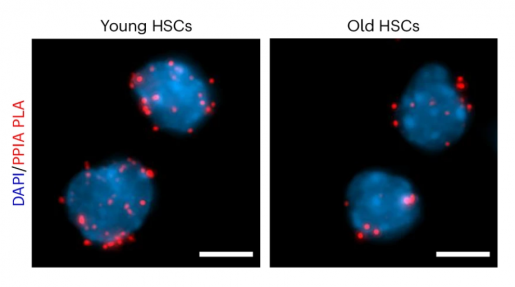By Baylor College of Medicine –
The levels of cyclophilin A, shown here in red, decline as hematopoietic stem cells age. Image courtesy of the authors/Nature Cell Biology, 2024. Nothing lives forever, but compared to other cells in the body, hematopoietic stem cells (HSCs) are remarkably long-lived. HSCs are blood-forming cells – they give rise to rapidly dividing progenitor cells, which in turn generate hundreds of billions of cells to fulfill the daily demand of oxygen-delivering red blood cells, disease-fighting white blood cells and clot-forming platelets.




